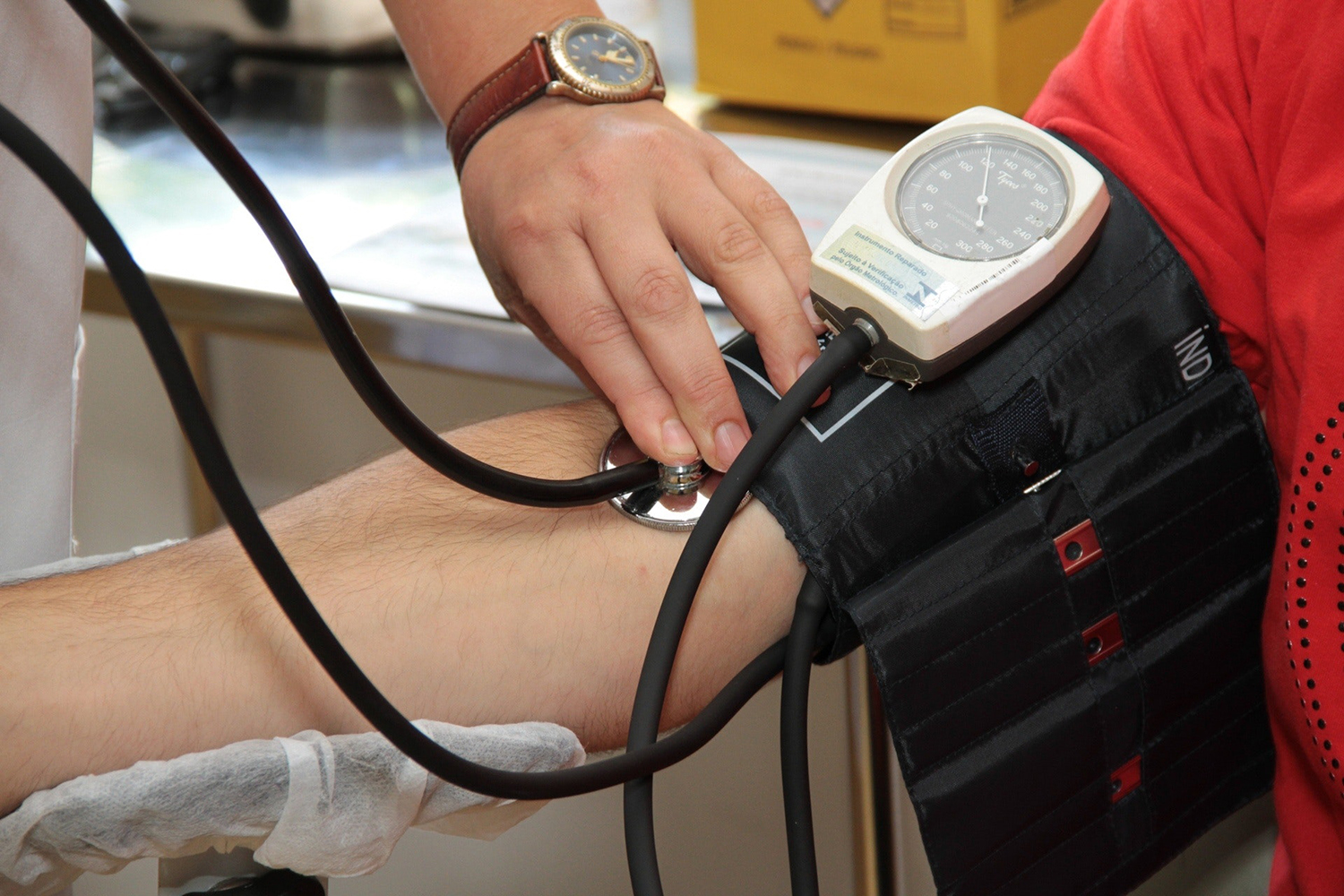5 Step Plan for Blood Pressure Management

High blood pressure is fairly common, especially with an increase in age. Based on new blood pressure guidelines almost 50% of American adults have high blood pressure. Your blood pressure depends on how much blood your heart is pumping, and the resistance in your arteries which allows the blood to flow. The narrower your arteries, the higher your blood pressure.
High blood pressure puts more strain on your heart because it has to work harder, and can cause damage to your arteries. Risk factors include obesity, smoking, family history, and drinking too much alcohol. In some cases, the cause is unknown. This condition is known as the “silent killer” because there are not usually noticeable symptoms. You may live with high blood pressure for years and not know. Uncontrolled high blood pressure over time can damage your heart, lungs, blood vessels, brain, and kidneys putting you at higher risk for heart disease, stroke, and kidney disease.
Up to age 45, men are more likely to have high blood pressure than women, and by age 65, it’s more common in women.
Here is a 5 Step Plan for Managing Blood Pressure through lifestyle choices:
1. Maintain a Healthy Weight
Blood pressure often increases as weight increases. According to the American Heart Association, a healthy BMI between 18.5-24.9 is the goal. Losing just 10 pounds can help reduce or prevent high blood pressure. Your caloric intake to lose weight safely should be discussed with your dietitian and each case should be individualized. Increasing the amount of exercise with the appropriate daily caloric intake can help promote a healthy weight. Weight loss in overweight and obese patients lowers diastolic and systolic blood pressure by 5 mmHg.
Keep in mind more weight around the waistline puts you at a greater risk of high blood pressure. In general, men are at risk if their waist measurement is greater than 40 inches and women are at risk if their waist measurement is greater than 35 inches. These numbers can vary and should be monitored.
2. Monitor Blood Pressure at Home
Your blood pressure is measured in millimeters of mercury (mmHg). A normal blood pressure is around 120/80 mmHg or less. Normal levels can fall below this, yet consistent readings above this can lead to a high blood pressure diagnosis. The top number of the reading is called the systolic and shows the pressure in your blood vessels when your heart beats. The lower number is called the diastolic and it measures the pressure at rest between heartbeats when the heart refills with blood.
If you are diagnosed with high blood pressure discuss your personal blood pressure goal with your doctor. Blood pressure readings above 120/80 mm Hg are considered elevated and above 130/80 mmHg is Stage I Hypertension.
By monitoring your blood pressure at home, you will monitor trends more consistently and be able to supplement the readings taken by your doctor for a more accurate picture of your blood pressure.
3. Exercise Regularly
Be regularly active to promote healthy blood pressure levels. Regularly increasing heart rate during exercise strengthens the heart muscle and allows your heart to pump blood throughout the body more efficiently.
If your blood pressure is elevated, meaning above 120/80 but below 130/80, exercise is a great tool you can use to prevent a high blood pressure diagnosis. According to the Nutrition Care Manual, regular physical activity of at least 30 minutes for 5 days or more can lower your blood pressure an average of 4-9 mm Hg.
Discuss with your doctor, but typically the best forms of exercise for lowering blood pressure include walking, jogging, cycling, swimming or dancing. Strength training can also help reduce blood pressure.
If you are already diagnosed with high blood pressure and being treated, regular exercise will boost the effectiveness of certain blood pressure medications.
4. Eat a Healthy Diet (DASH)
Diet plays a large part in lowering blood pressure. The DASH (Dietary Approach to Stop Hypertension) diet can lower blood pressure up to 14mm Hg. The DASH Diet emphasizes vegetables, fruits, whole grains, low-fat dairy products, and limiting the amount of fat (specifically saturated fat and cholesterol).
Serving size may differ depending on each individual person, but there are some recommended guidelines:
- 7-8 servings of grains daily, 3 of which should be whole grain
- 4-5 servings of fruits a day
- 4-5 servings of vegetables a day
- 2-3 servings a day of low-fat or nonfat dairy
- There should be 2 or fewer servings of lean meat, fish, or poultry a day
- 4-5 servings of nuts, seeds, and legumes weekly
- Limited fats and sweets
Sodium should be limited to 1500-2400mg per day. Incorporate foods rich in potassium to counteract the impact of sodium on blood pressure. Potassium-rich foods include bananas, oranges, apricots, spinach, greens, sweet potatoes, fish, and low-fat dairy.
5. Limit Amount of Alcohol
Limiting the amount of alcohol consumed to less than two drinks per day for men and less than one drink per day for women lowers blood pressure by 2-4 mmHg on average.
One drink is considered 12 ounces of beer, 5 ounces of wine, or 1.5 ounces of distilled spirits.
Drinking more than the recommended amounts can raise blood pressure and reduce the effectiveness of blood pressure medications. Discuss with your doctor if you receive a blood pressure medication prescription.
If you are interested in more information and guidance to lower blood pressure levels through diet and lifestyle, access my free ecourse 7 Natural Ways to Lower Blood pressure here.
All the best,
Lisa Nelson RD
Health Pro for HealthCentral



